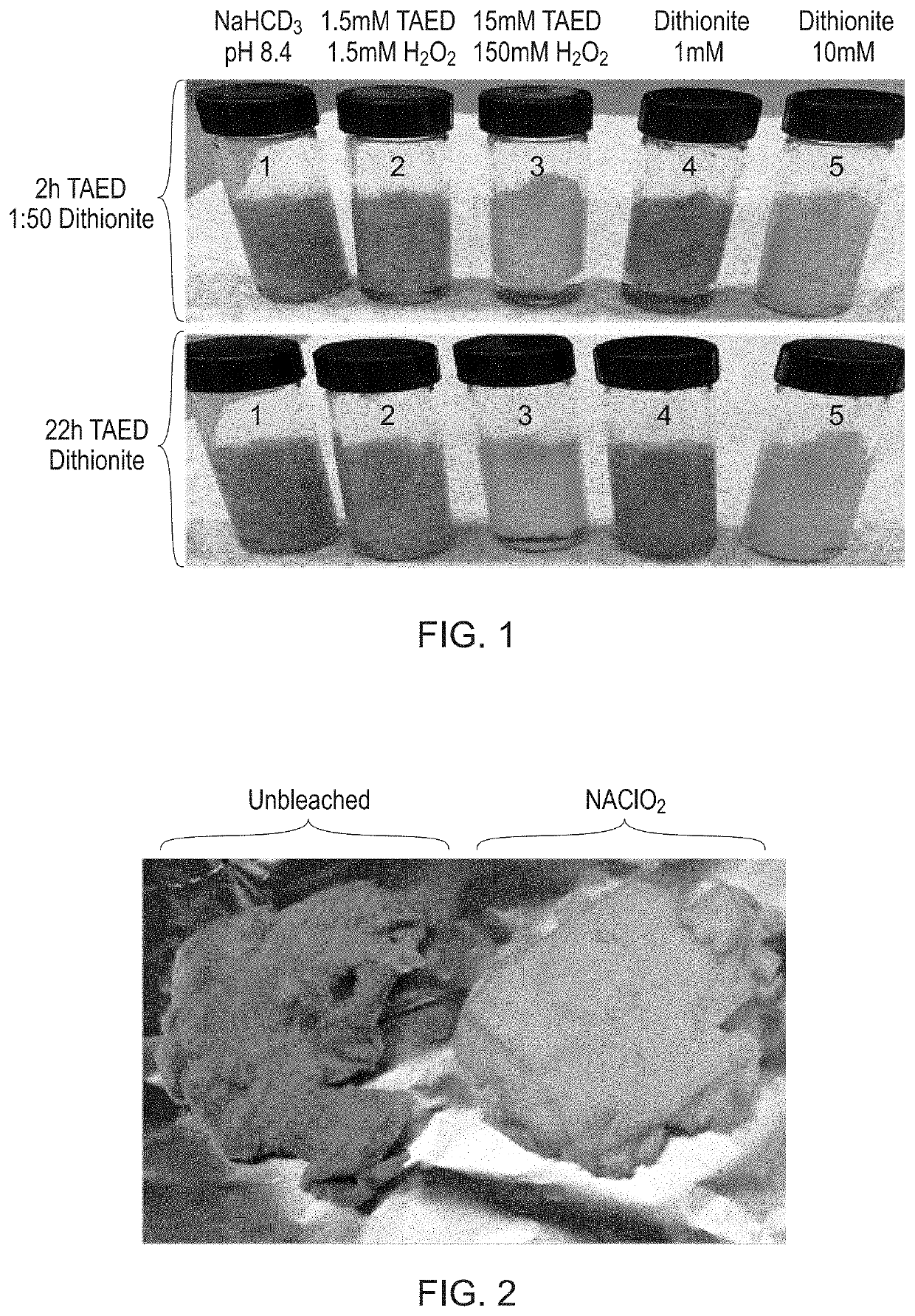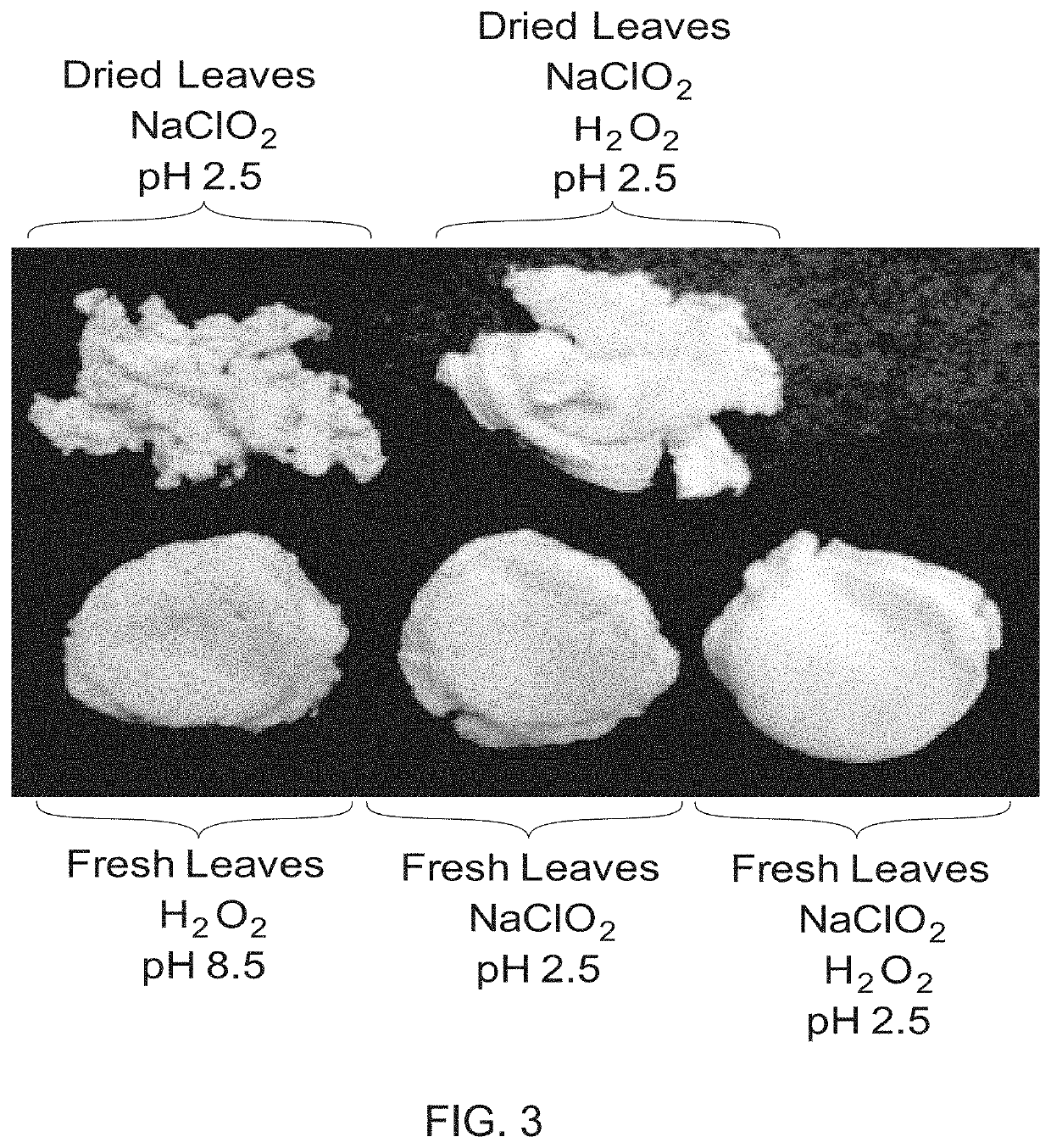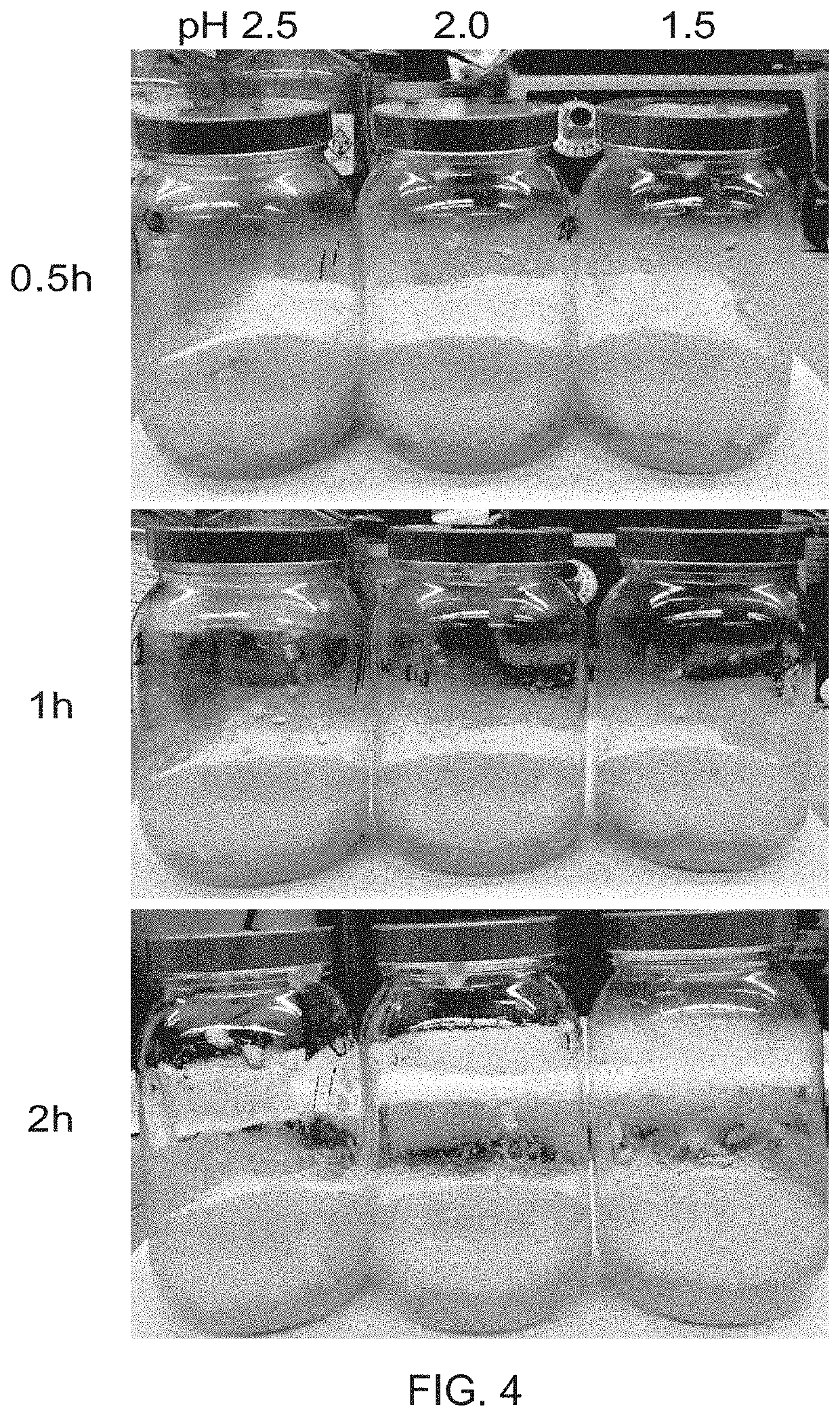Bleaching Trichomes to Remove Proteins
a technology of trichome fibers and proteins, applied in the field of bleaching trichome fibers, can solve the problems of inability to obtain individualized trichome fibers in large amounts, fibrous structure unacceptable to consumers of fibrous structure, and inability to meet consumer needs, etc., to achieve lighten the color of trichomes, remove allergenicity concerns, and lighten the color of specks
- Summary
- Abstract
- Description
- Claims
- Application Information
AI Technical Summary
Benefits of technology
Problems solved by technology
Method used
Image
Examples
example 1
with TAED+Hydrogen Peroxide and Dithionite
[0094]For small scale testing, 50 mg of trichomes were distributed into 7.5 mL screw capped glass vials. Five mL of 25 mM sodium bicarbonate, pH 8.4 was added and heated to 45° C. until the trichomes were wetted. Taking into account the percent active in the powders and solutions, TAED or dithionate were added in the noted concentrations and the vials were shaken. Hydrogen peroxide was added last and the vials incubated at 45° C. with occasional shaking. Photographs of the vials were taken at about 2 h and 22 h (FIG. 1). Trichomes bleached with dithionite lightened, but turned a light tan. TAED+Hydrogen Peroxide yielded much lighter trichomes.
example 2
[0095]Dried trichomes (0.5 g each) were placed in two 50 mL conical tubes and 40 mL of 25 mM sodium citrate buffer, pH 4.5 was added. 50 mM sodium chlorite was added to one tube and the tubes were shaken and incubated at 31° C. for 45.5 h. The unbleached and bleached trichomes were vacuum filtered over a 0.22 um filter, washed with water, dried at 50° C. overnight, weighed and photographed (FIG. 2). After 24 h of incubation, the samples with NaClO2 were lighter color than the non-treated control, but still tan. By 45.5 h, the treated samples were bright yellow. Upon filtering, most of the yellow color was washed away in the buffer, although the bleached trichomes still look slightly yellow to the eye. Brown specks present in the trichome preparation were bleached and not visible in the final sample.
example 3
Trichomes with Chlorite+Hydrogen Peroxide
[0096]Trichomes (0.4 g) recovered from dried leaves and from fresh leaves were placed in 50 mL conical tubes. 40 mL of sodium citrate, pH 2.5 was added and treated with hydrogen peroxide, 40 mM sodium chlorite and / or 40 mM sodium chlorite+0.4 g Hydrogen Peroxide and incubated at 57° C. for 17 h. After incubation, the samples were vacuum filtered over a 0.22 um filter, washed with water, dried at 50° C. overnight and photographed (FIG. 3). Running the NaClO2 bleaching at pH 2.5 sped up the reaction, which at 31° C. was complete at 5 h vs. 48 h at pH 4.5. Adding hydrogen peroxide to the NaClO2 greatly reduced the yellow color.
PUM
| Property | Measurement | Unit |
|---|---|---|
| molecular weight | aaaaa | aaaaa |
| temperature | aaaaa | aaaaa |
| molecular weight | aaaaa | aaaaa |
Abstract
Description
Claims
Application Information
 Login to View More
Login to View More - R&D
- Intellectual Property
- Life Sciences
- Materials
- Tech Scout
- Unparalleled Data Quality
- Higher Quality Content
- 60% Fewer Hallucinations
Browse by: Latest US Patents, China's latest patents, Technical Efficacy Thesaurus, Application Domain, Technology Topic, Popular Technical Reports.
© 2025 PatSnap. All rights reserved.Legal|Privacy policy|Modern Slavery Act Transparency Statement|Sitemap|About US| Contact US: help@patsnap.com



